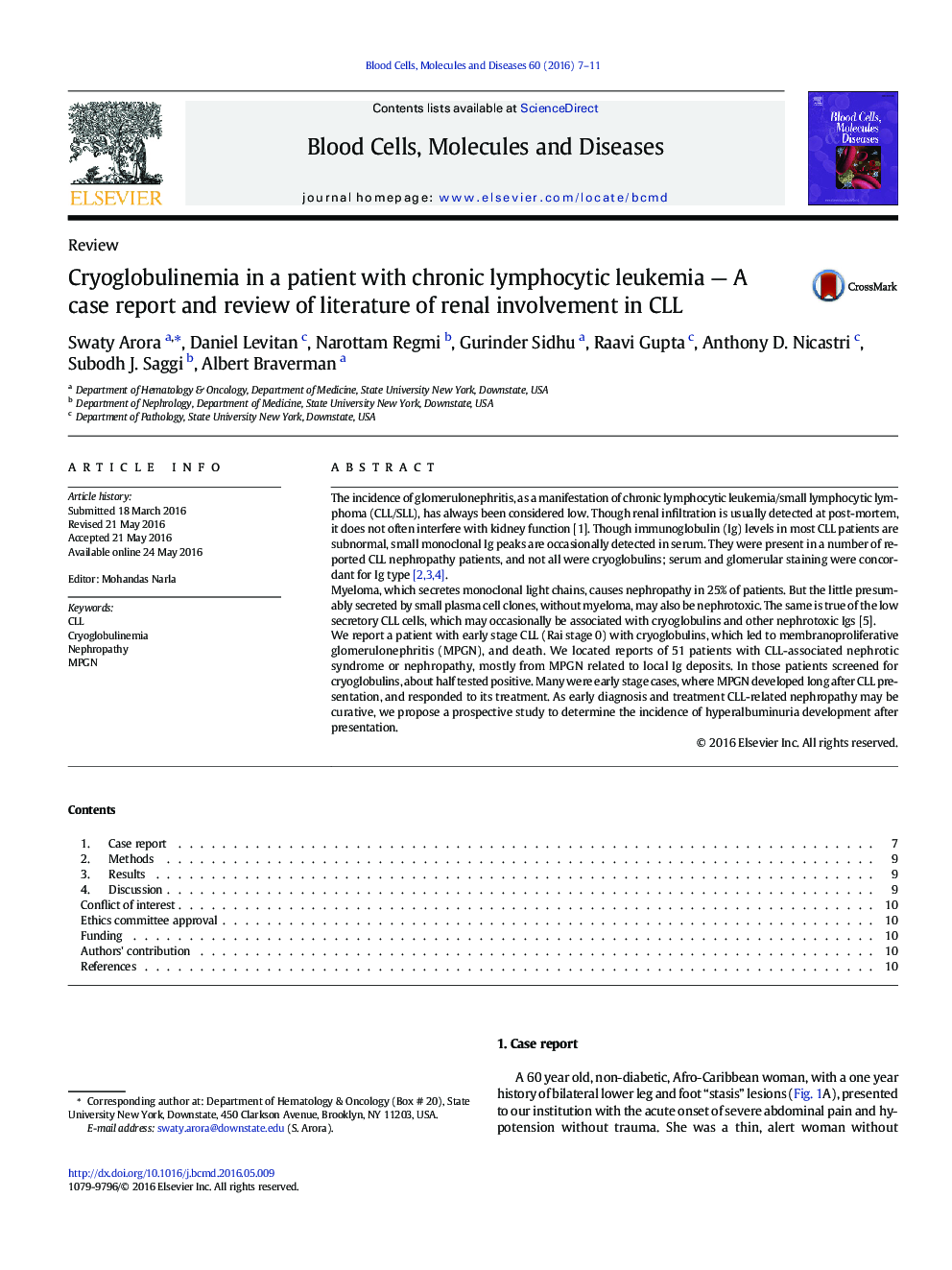| Article ID | Journal | Published Year | Pages | File Type |
|---|---|---|---|---|
| 2827048 | Blood Cells, Molecules, and Diseases | 2016 | 5 Pages |
The incidence of glomerulonephritis, as a manifestation of chronic lymphocytic leukemia/small lymphocytic lymphoma (CLL/SLL), has always been considered low. Though renal infiltration is usually detected at post-mortem, it does not often interfere with kidney function [1]. Though immunoglobulin (Ig) levels in most CLL patients are subnormal, small monoclonal Ig peaks are occasionally detected in serum. They were present in a number of reported CLL nephropathy patients, and not all were cryoglobulins; serum and glomerular staining were concordant for Ig type [2], [3] and [4].Myeloma, which secretes monoclonal light chains, causes nephropathy in 25% of patients. But the little presumably secreted by small plasma cell clones, without myeloma, may also be nephrotoxic. The same is true of the low secretory CLL cells, which may occasionally be associated with cryoglobulins and other nephrotoxic Igs [5].We report a patient with early stage CLL (Rai stage 0) with cryoglobulins, which led to membranoproliferative glomerulonephritis (MPGN), and death. We located reports of 51 patients with CLL-associated nephrotic syndrome or nephropathy, mostly from MPGN related to local Ig deposits. In those patients screened for cryoglobulins, about half tested positive. Many were early stage cases, where MPGN developed long after CLL presentation, and responded to its treatment. As early diagnosis and treatment CLL-related nephropathy may be curative, we propose a prospective study to determine the incidence of hyperalbuminuria development after presentation.
